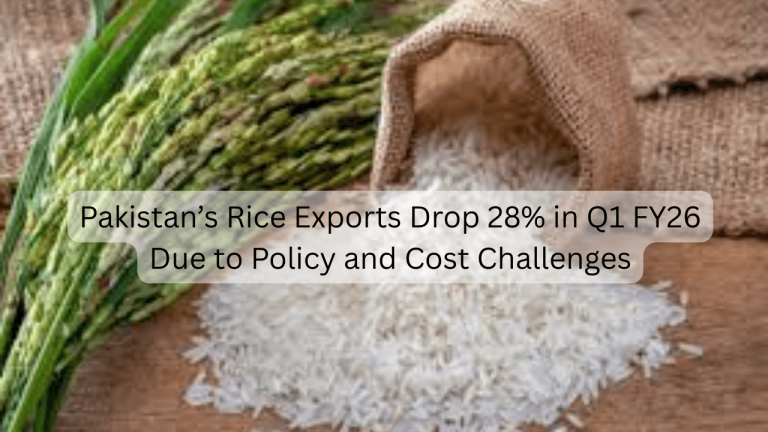Pakistan’s rice exports declined by 28% during the first quarter of the fiscal year 2025-26, grappling with increasing costs, currency fluctuations, and policy-related concerns that have rendered Pakistani rice less competitive internationally.
Basmati rice exports declined the most, plummeting by 45.5% from 248,500 tonnes to 137,066 tonnes. Non-basmati rice exports also declined by 22.1%, from 764,700 tonnes to 575,731 tonnes. Rice exports, as per official statistics, fell to 712,797 tonnes in July-September, from 991,146 tonnes during the same time last year.
Experts are of the view that State Bank of Pakistan’s (SBP) excessive export financing cost, which is nearly 600 basis points above India, dented Pakistan’s competitiveness. Furthermore, the Pakistani rupee’s appreciation—rising from Rs284.70 to Rs280.85 against the dollar—has increased export prices, making Pakistan’s rice more costly relative to India, where the rupee has declined.
Exporters also highlighted the change from the Final Tax Regime (FTR) to the Normal Tax Regime (NTR), which has decreased profit margins. They also experienced irregular application of phytosanitary measures and problems with the Federal Investigation Agency (FIA) harassing traders.
The Pakistan Rice Exporters Association (Reap) also observed that India’s move to end its export ban, withdraw the minimum export price on basmati rice, and zero-rate exports of rice has made the situation more difficult for Pakistani exporters. They also added non-implementation of the Commodity Hoarding Act 1977, under which stockpiling would be prohibited at the beginning of the harvest season, which has pushed domestic rice prices up.
Reap is calling on the government to implement an enduring policy of border trade, introduce export insurance, and take measures against hoarding to stabilize the market.

